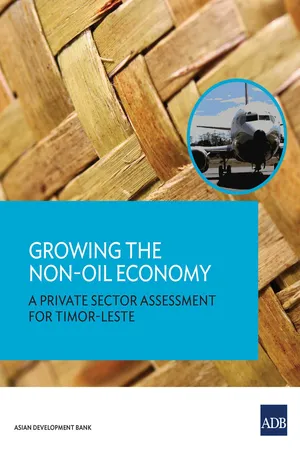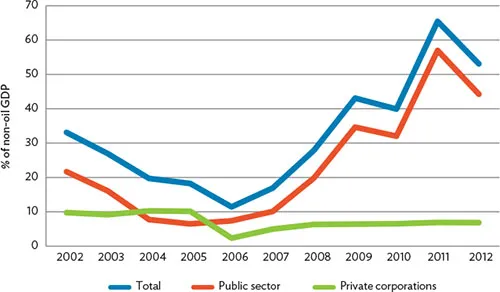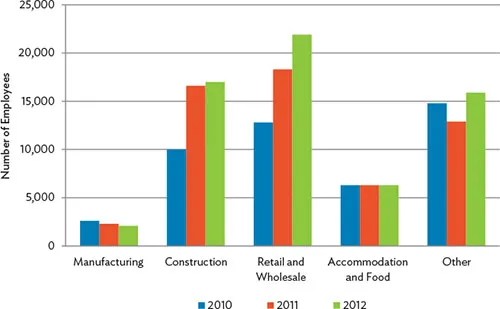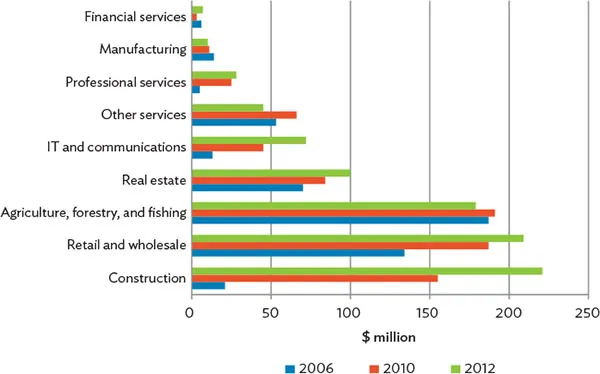![]()
1 INTRODUCTION AND OVERVIEW OF THE ECONOMY
The Government of Timor-Leste faces tremendous challenges as it seeks to improve its citizens’ quality of life. The country needs inclusive, sustainable private-sector-led economic growth to achieve this aim. This private sector assessment (PSA) reviews Timor-Leste’s environment for private sector development, and identifies key areas that constrain business formation and growth. The PSA is based on a review of the government strategies related to private sector development; available economic reports; and discussions with government officials, donors, and representatives of the private sector and civil society.
Emerging from conflict
Timor-Leste is a new nation, gaining independence in May 2002 after more than 4 centuries of Portuguese colonial rule, followed by 24 years of Indonesian government. The latter period was characterized by constant violence, estimated to have caused more than 200,000 deaths. An overwhelming vote for independence in August 1999 was followed by widespread violence, population displacement, and property destruction. A majority of public and private property was destroyed during this time, including the electrical grid, water supply systems, schools, and health clinics. As a result, the country was faced with the daunting task of rebuilding its institutions and basic infrastructure from the ground up.
Timor-Leste suffered further violence and displacement of people in 2006 because of complex, interwoven issues, including a collapse in state security due to institutional weaknesses within the security forces, unresolved divisions within the national political leadership, and massive social and economic disruptions remaining from the 1999 postreferendum violence. However, in the near-decade since 2006, the country has managed to build a more inclusive political coalition and increased tangible services for the population. This has created political stability, eliminated violent conflict, and generated new confidence in the state.
Surveys indicate that most Timorese believe the government is doing a good job and the country is heading in the right direction.1 However, investors have long memories. The prolonged period of instability, uncertainty, and destruction heightens the perception of risk. To allay investors’ concerns regarding the future requires consistent, long-term, business-friendly policies.
Economy remains highly dependent on an uncertain oil sector
The oil sector dominates Timor-Leste’s small economy. Although modest by international standards, production from the Joint Petroleum Development Area (JPDA) in the Timor Sea has contributed an average of 80% of total gross domestic product (GDP) over 2006–2012 (Figure 1). This oil wealth has provided the government with a source of funds with which it has been able to promote development and achieve the current period of stability.
Figure 1: Timor-Leste Gross Domestic Product at Constant Prices, 2002–2012 ($ million)
GDP = gross domestic product.
Source: Democratic Republic of Timor-Leste, Ministry of Finance, General Directorate of Statistics. 2014b. Timor-Leste National Accounts 2000–2012. Dili. http://www.statistics.gov.tl/wp-content/uploads/2014/07/National-Account-2012.pdf
However, oil revenues from the existing field are now declining and expected to end by 2021. The prospects for the development of new oil fields are uncertain.2
A young, fast-growing population and high poverty
Timor-Leste’s population was 1.066 million in 2010. Approximately 70% live in rural areas and rely on farming for survival. Despite the country’s small size, it has more than 20 languages, including Portuguese and Tetum (the official languages), Indonesian and English (working languages), and 15 indigenous languages.
Much of the population is young—over 44% was below 15 years old in 2010. The country also has a high fertility rate (5.3 births per woman in 2012).3 This means an estimated 470,000 individuals are expected to enter the labor market by 2030.4
In 2010, the economy created formal jobs for about 75,000 individuals, or 12% of the working-age population.5 Many of these jobs were in the public sector.6 Total non-oil private sector employment was only 46,400 people. The non-oil private sector has grown since 2010 levels and, in 2012, was estimated to employ 63,200 people.7 While this growth in private sector employment is positive, there is a critical need to continue building capacity within the sector. This capacity is needed to absorb the large numbers of existing unemployed and underemployed people, along with new workers who will join the labor market in the coming years.
Despite a lack of data, poverty levels in the country appear to remain high. The national headcount poverty rate increased from 36% in 2001, to 50% in 2007. In this period, poverty rose in all regions and its depth increased significantly. One third of the population was classified as living in extreme poverty in 2007;8 and, despite expansion of the economy since that year, poverty levels remain high. While a detailed poverty analysis has not been done on the Household Income and Expenditure Survey 2011,9 more than 40% of the national population is thought to still fall below the poverty line, while in rural areas it is thought to be above 50%.10
Fledgling private sector focused on demand created by public sector spending
Economies grow and create jobs as a result of productive investment. This can come from public sources, as well as private businesses. Timor-Leste has experienced very high levels of investment since 2007, predominantly from the public sector (Figure 2). Private sector investment has been relatively flat, averaging 6% of non-oil GDP over 2007–2012. As public sector investment levels begin to fall in the future, economic growth will increasingly depend on greater levels of investment by the private sector.
Figure 2: Investment Levels in Timor-Leste, 2002–2012 (%)
GDP = gross domestic product.
Source: Democratic Republic of Timor-Leste, Ministry of Finance, General Directorate of Statistics. 2014b. Timor-Leste National Accounts 2000–2012. Dili. http://www.statistics.gov.tl/wp-content/uploads/2014/07/National-Account-2012.pdf
To date, private sector investment and activity in the non-oil sector has focused on serving the direct and indirect demand created by the rapid increase in government spending.
The non-oil business sector comprises approximately 10,000 registered business entities; the majority is small, locally-owned, one- and two-person shareholder companies. These businesses are based primarily in Dili, and are mainly involved in retail, wholesale, and construction activities. Combined, these sectors accounted for 78% of total business income and 62% of total business employment in 2012 (Figures 3 and 4). Similarly, most recent capital investment has been made by businesses within these two sectors, much of it related to government contracts.11
Figure 3: Total Income by Industry, 2010–2012 ($ million)
Source: Democratic Republic of Timor-Leste, Ministry of Finance, General Directorate of Statistics. 2014a. Business Activity Survey of Timor-Leste 2012. Dili.
Figure 4: Total Private Sector Employment by Industry, 2010–2012
Source: Democratic Republic of Timor-Leste, Ministry of Finance, General Directorate of Statistics. 2014a. Business Activity Survey of Timor-Leste 2012. Dili.
For value added output, the construction, and retail/and wholesale industries are also the largest industry sectors in the economy; these have grown the most since 2006 (Figure 5). Substantive growth also occurred in the information technology and communications and real estate sectors, although from smaller bases. However, the agriculture, forestry, fisheries, and manufacturing sectors’ output declined between 2006 and 2012. While the agriculture sector remains a large component of the economy, its potential is not realized. Rather than acting as a source of new jobs and incomes, the majority of rural households continue to rely on subsistence farming, and food insecurity remains a serious concern.
Figure 5: Value Added by Non-Oil Industries for Selected Years, 2006, 2010, and 2012
IT = information technology.
Source: Democratic Republic of Timor-Leste, Ministry of Finance, General Directorate of Statistics. 2014b. Timor-Leste National Accounts 2000–2012. Dili. http://www.statistics.gov.tl/wp-content/uploads/2014/07/National-Account-2012.pdf
Coffee exports and net travel receipts represent Timor-Leste’s primary sources of non-oil foreign exchange. Combined, they amounted to just $66 million in 2013—a small fraction of the country’s imports and service payments.12
Timor-Leste is not a member of any multilateral or regional trade arrangement, although it has submitted a formal request to join the Association of Southeast Asian Nations. Despite the lack of trade arrangements, international market access is not a major issue because Timor-Leste receives preferential access to most high-income markets.13
Need to catalyze private sector investment into productive, export-oriented sectors that will create jobs and income—leading to a reduction in poverty
While the sit...





